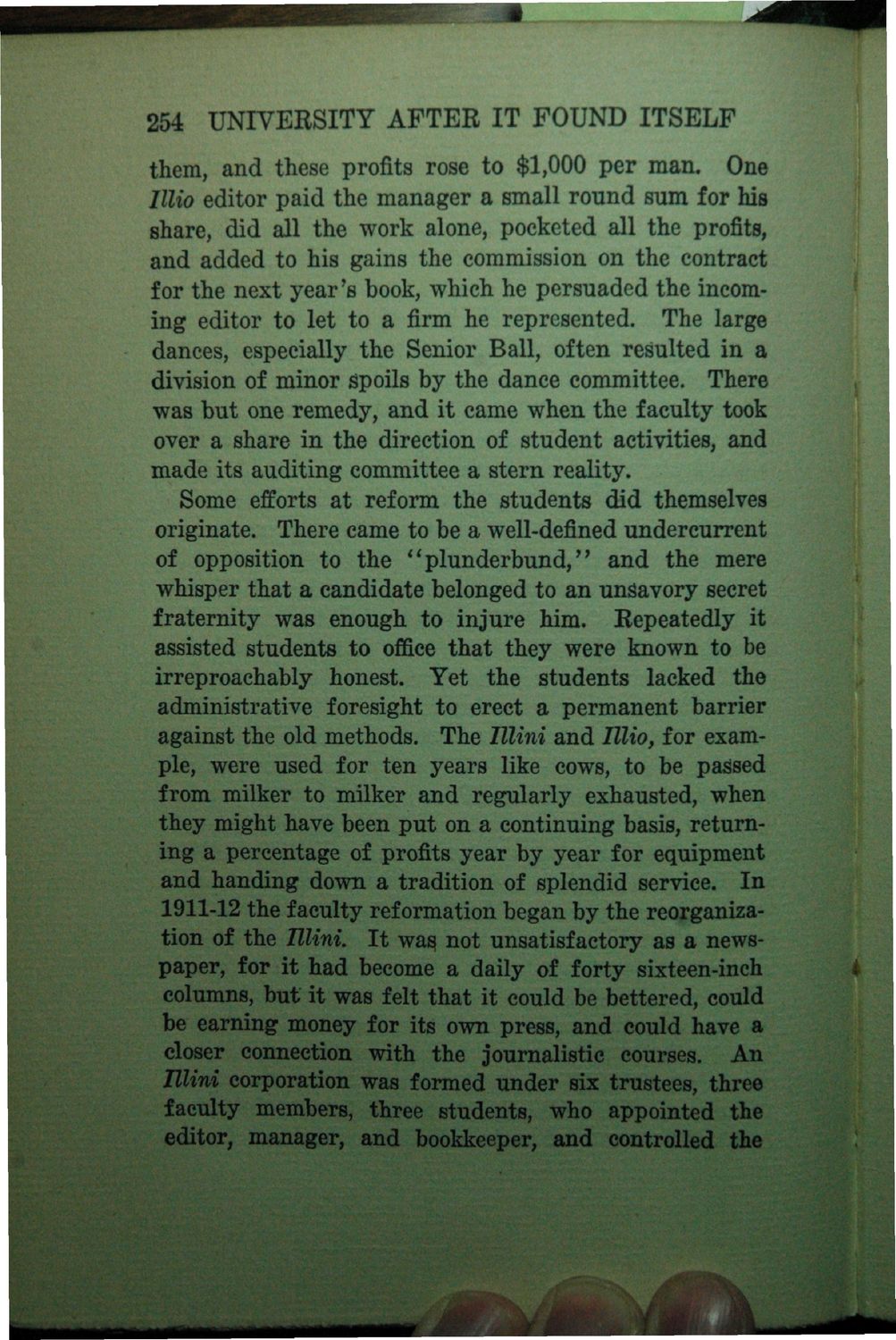| |
| |
Caption: Book - History of the University (Nevins)
This is a reduced-resolution page image for fast online browsing.

EXTRACTED TEXT FROM PAGE:
254 UNIVERSITY AFTER IT FOUND ITSELF them, and these profits rose to $1,000 per man. One IUio editor paid the manager a small round sum for his share, did all the work alone, pocketed all the profits, and added to his gains the commission on the contract for the next year's book, which he persuaded the incoming editor to let to a firm he represented. The large dances, especially the Senior Ball, often resulted in a division of minor spoils by the dance committee. There was but one remedy, and it came when the faculty took over a share in the direction of student activities, and made its auditing committee a stern reality. Some efforts at reform the students did themselves originate. There came to be a well-defined undercurrent of opposition to the "plunderbund," and the mere whisper that a candidate belonged to an unsavory secret fraternity was enough to injure him. Repeatedly it assisted students to office that they were known to be irreproachably honest. Yet the students lacked the administrative foresight to erect a permanent barrier against the old methods. The Illini and IUio, for example, were used for ten years like cows, to be passed from milker to milker and regularly exhausted, when they might have been put on a continuing basis, returning a percentage of profits year by year for equipment and handing down a tradition of splendid service. In 1911-12 the faculty reformation began by the reorganization of the Illini. It was not unsatisfactory as a newspaper, for it had become a daily of forty sixteen-inch columns, but it was felt that it could be bettered, could be earning money for its own press, and could have a closer connection with the journalistic courses. An Illini corporation was formed under six trustees, three faculty members, three students, who appointed the editor, manager, and bookkeeper, and controlled the 4
| |